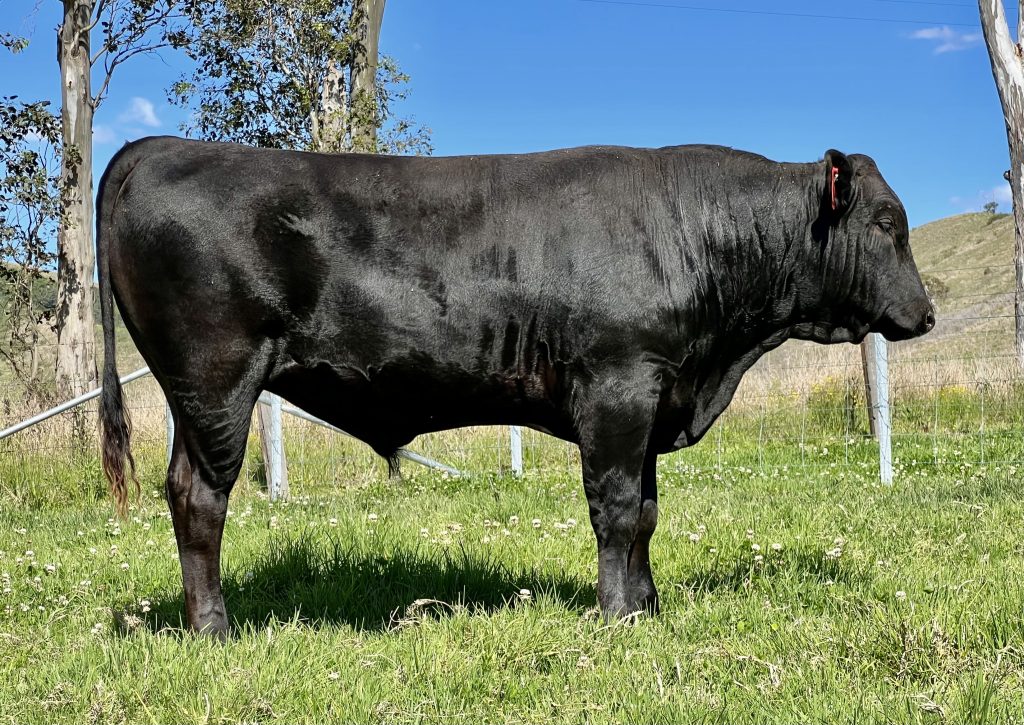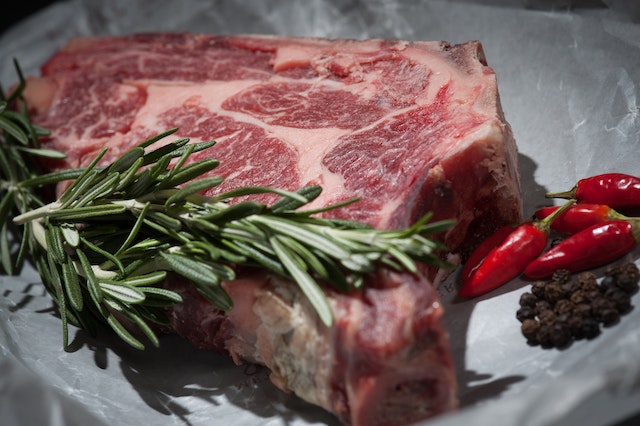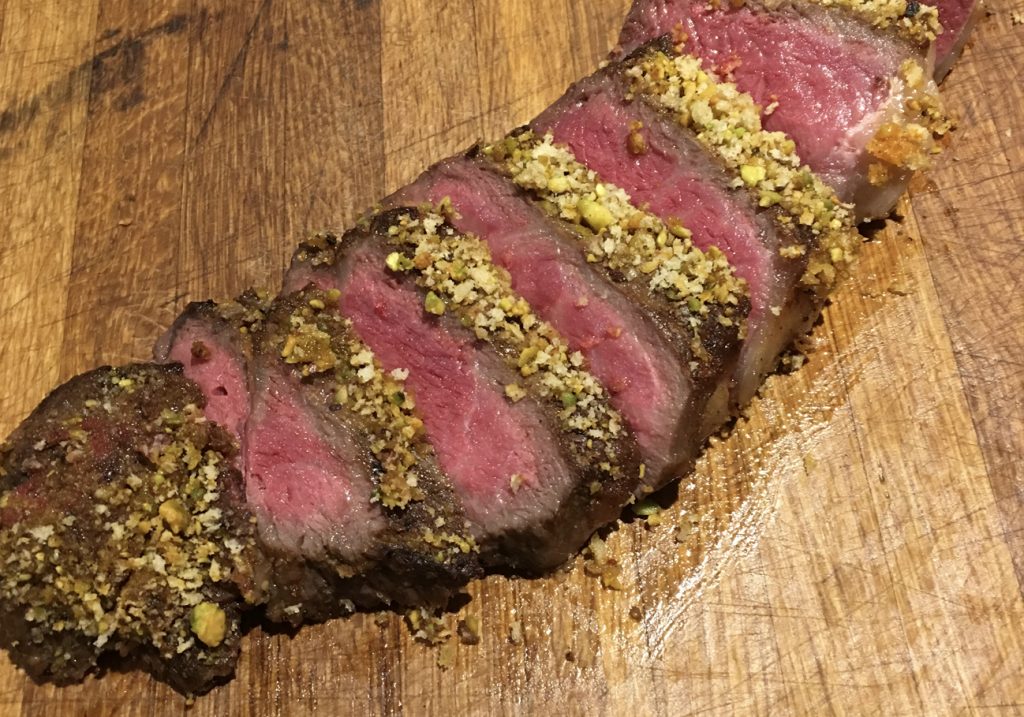About Wagyu Beef
Wagyu beef is the undisputed leader in terms of beef quality—a beef connoisseur’s delight.
Due to their unique DNA—which is quite different from other breeds—Wagyu cattle produce the most highly marbled, most tender beef in the world. They are genetically predisposed to produce an extraordinary amount of marbling, giving the beef an exquisite taste.
Not only is Wagyu beef highly marbled, the fact that Wagyu beef is extraordinarily tender, juicy and flavorful is due to the high concentration of “good fats” as compared to other types of beef. These “good fats” are what makes Wagyu beef more healthy.


THE EATING EXPERIENCE
People tasting Wagyu beef for the first time often utilize phrases such as “a buttery taste”, “it melts in your mouth” and “unbelievably juicy and tender” to describe the experience.
The “melt in your mouth” aspect of Wagyu beef is due to both a more tender meat fiber as well as a lower melting point marbling fat. Due to its chemical makeup, the lower melting point fat is what imparts the rich taste and also what makes Wagyu beef so juicy.
Wagyu steaks are especially prized—usually cooked only a short time over a hot flame or skillet to preserve the precious marbling. Slow-cooked Wagyu brisket, ribs and roasts are also prized for their outstanding eating experience. Increasingly, Wagyu hamburgers and even Wagyu sausages and hot dogs are making their way into the consumer market—sought after by consumers that want a better tasting product that is also more healthy.
THE HEALTH BENEFITS
Replacing non-Wagyu beef with Wagyu beef in the diet is beneficial to one’s health. Wagyu beef is lower in total cholesterol than beef from other breeds. In addition—compared to other types of beef—Wagyu beef has a much higher proportion of the desirable monounsaturated fats (“MUFA”) compared to undesirable saturated fatty acids (“SFA”). The ratio can be as high as 3:1, which compares to a 1:1 ratio in ordinary beef.
Within the human body, cholesterol—which cannot be dissolved in blood—is carried to and from cells by High Density Lipoprotein (“HDL”) and Low Density Lipoprotein (“LDL”). These two lipids, along with triglycerides (a form of fat made by the body) and Lp(a), which is a genetic variation of LDL, comprise a person’s total cholesterol count.
Higher levels of HDL are considered beneficial. According to the American Heart Association, medical experts believe HDL tends to deliver cholesterol away from the arteries and to the liver where the body can get rid of it. Some experts also believe HDL removes excess cholesterol from arterial plaque, thus slowing its build-up. Therefore, it is believed that high levels of HDL are associated with reduced risk for heart disease and heart attacks, whereas low levels of HDL (less than 40 mg/dL) are associated with increased risk of heart disease.
LDL circulates more slowly in the bloodstream and can build up on the inner walls of arteries that carry blood to the brain and heart, helping to form plaque. This can narrow the arteries while also making them less flexible. If a clot forms and blocks a narrowed artery, a heart attack or stroke can result.
Thus, foods that either elevate HDL in proportion to LDL or remain neutral in their influence on the ratio of HDL to LDL represent more healthy diet choices according to the experts.
MUFA has been proven by a variety of research to be either neutral to cholesterol levels, or to lower cholesterol levels, while also increasing HDL (good cholesterol) levels. Oleic Acid—the primary component in the MUFA contained in beef—lowers LDL (bad cholesterol) without affecting HDL, and is therefore associated with decreased risk of cardiovascular disease. Wagyu beef contains a higher proportion of MUFA than other types of beef, with the ratios of MUFA to SFA up to three times higher.
SFA has been proven by research to raise cholesterol levels and may increase the risk of cardiovascular disease. Wagyu beef again shows health benefits as compared to beef from other breeds, because +40% of the SFA in Wagyu beef are in the form of stearic acids, which has a minimum impact on cholesterol.
“Essential fatty acids” are fatty acids that are essential to human health, but which cannot be “manufactured” by the human body and which must therefore come into the body through one’s diet. From the perspective of health benefits, research shows that one of the most promising is Conjugated Linoleic Acid (“CLA”). Research has also shown that Wagyu beef contains one of the highest CLA/gram of any foodstuff, about 30% more than beef from other breeds, due to higher levels of Linoleic acid.
THE COST
Wagyu beef is expensive. Some people incorrectly believe the high price is due simply to scarcity, but this is not the case. Wagyu beef is more expensive because it is more costly to produce. The producer’s cost for seed stock (the original breeding stock) is higher than for most other breeds of cattle, which is in part due to scarcity at this time. As more breeding stock becomes available, the cost of seed stock is expected to come down over time. The cost of raising Wagyu steers to harvest age is also higher.
Wagyu cattle are typically fed a more expensive Japanese style diet designed to help maximize marbling during the feeding and finishing process, as compared to a less expensive corn-based finishing diet fed to most beef cattle in the United States. In addition, Wagyu cattle are born smaller and grow slower than other breeds. It is typical for fullblood (100% pure Japanese genetics) Wagyu steers to be fed twice as long as the more common breeds of beef cattle.


Many beef producers have found that the F1 Wagyu (the first cross containing 50% Wagyu genetics) is the optimal blend of beef quality improvement and cost efficiency. In fact, most of the Wagyu beef sold in the U.S. has 50% Wagyu genetics. The cross is achieved by using a Wagyu bull on another breed. Adding the Wagyu influence to other breeds delivers a higher quality grade and better yield grade, which increases the value of the fattened steer.
The improved feed efficiency and reduced time on feed reduces the cost of production compared to higher percentage Wagyu calves. However, there is a growing market for full blood and high percentage Wagyu beef. Although production costs are higher due to lower weaning weights and slower growth, there is a segment of the population willing to pay substantially higher prices for beef with extreme levels of marbling.


